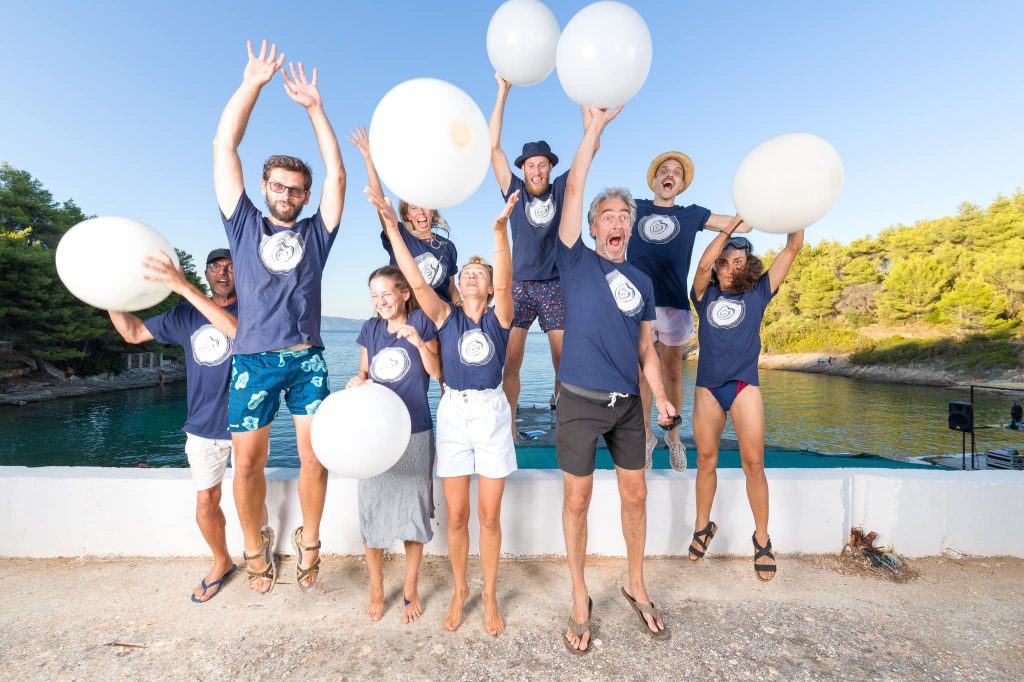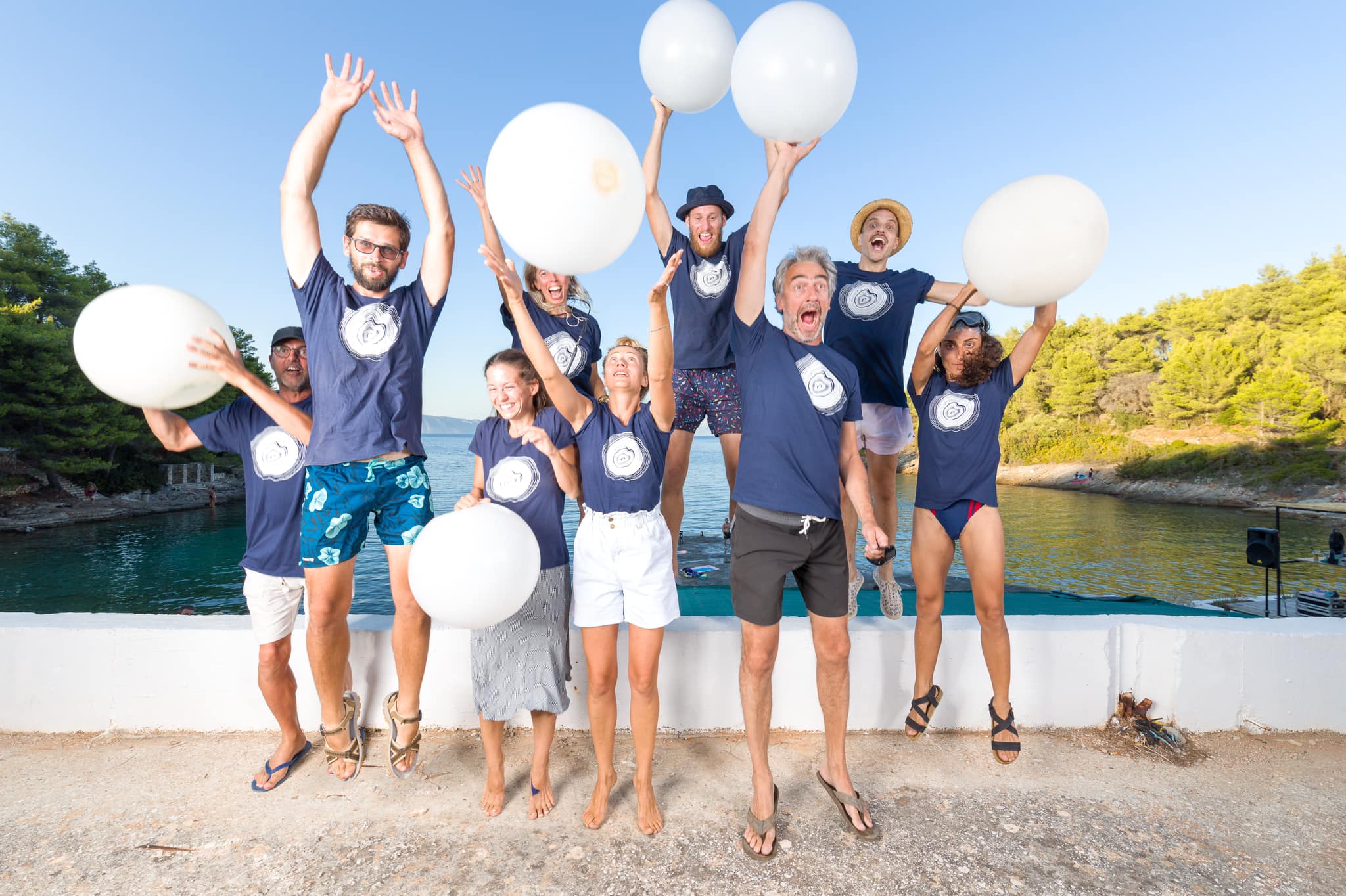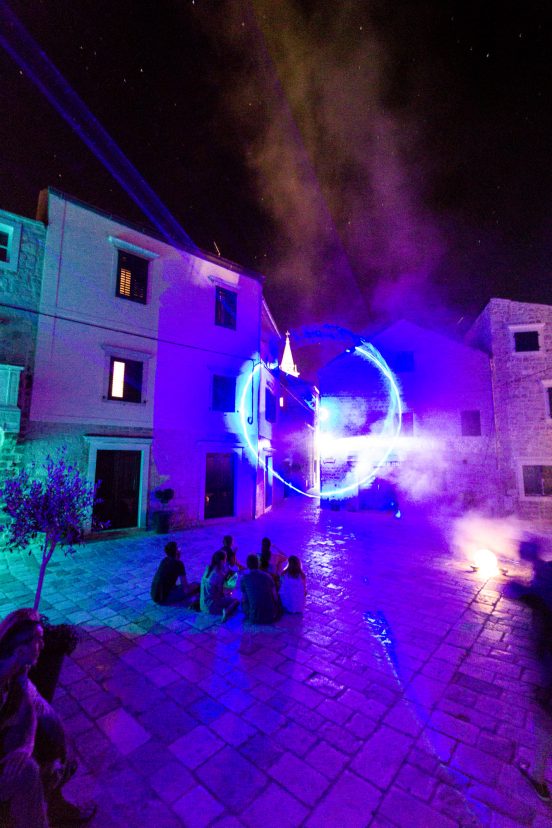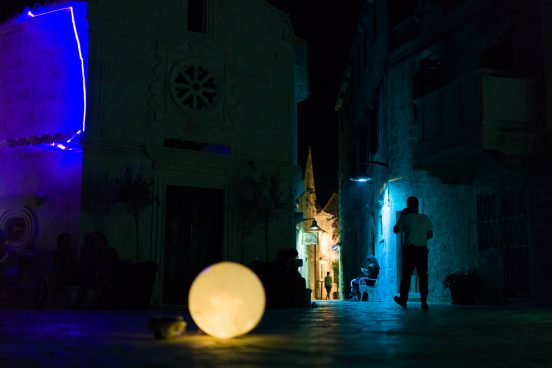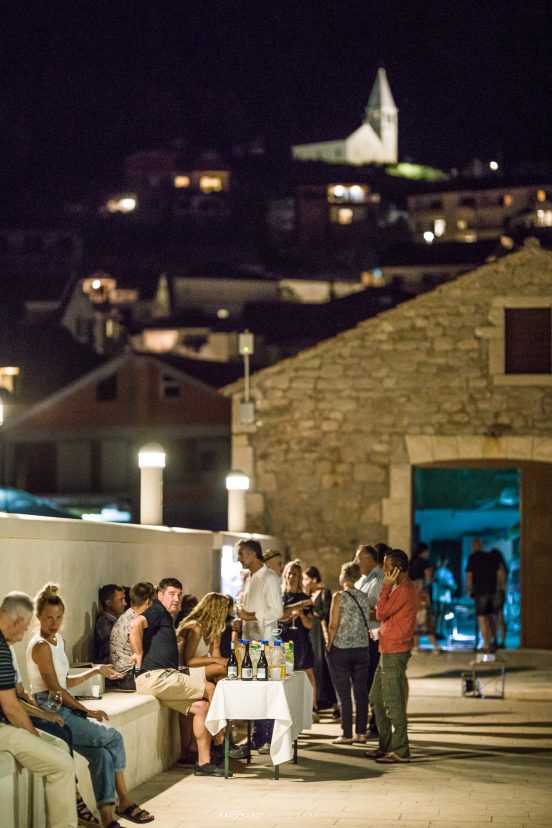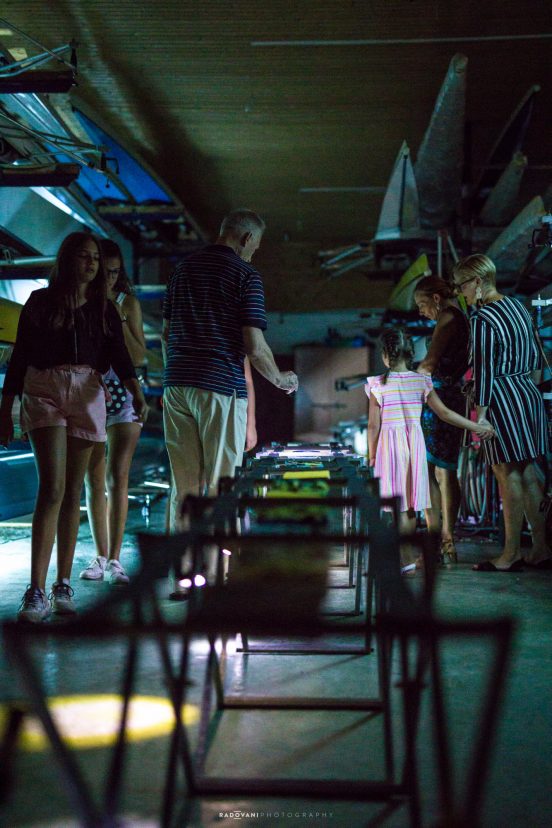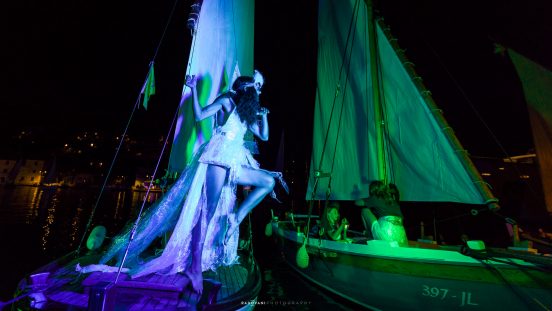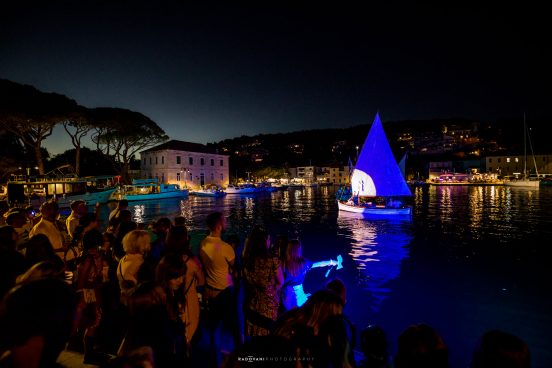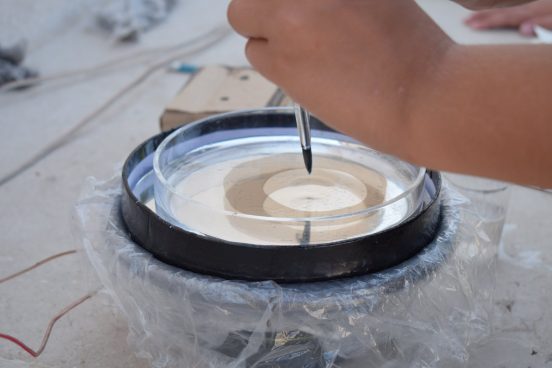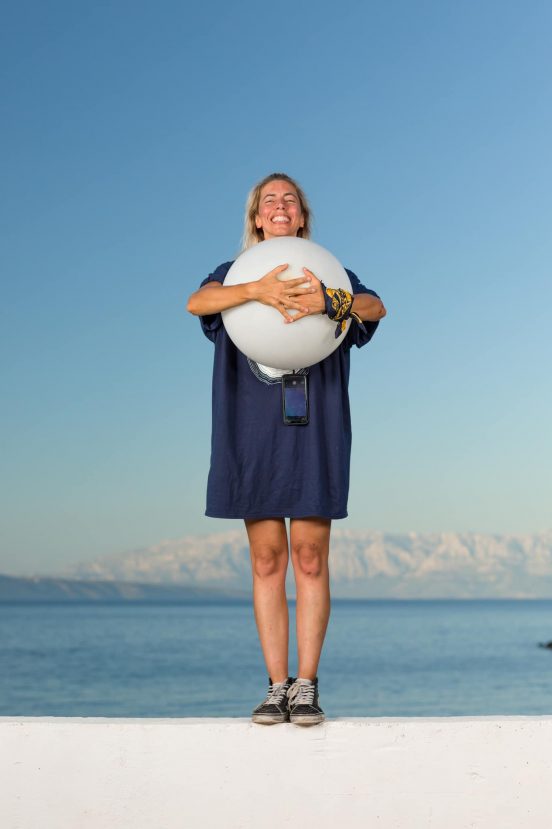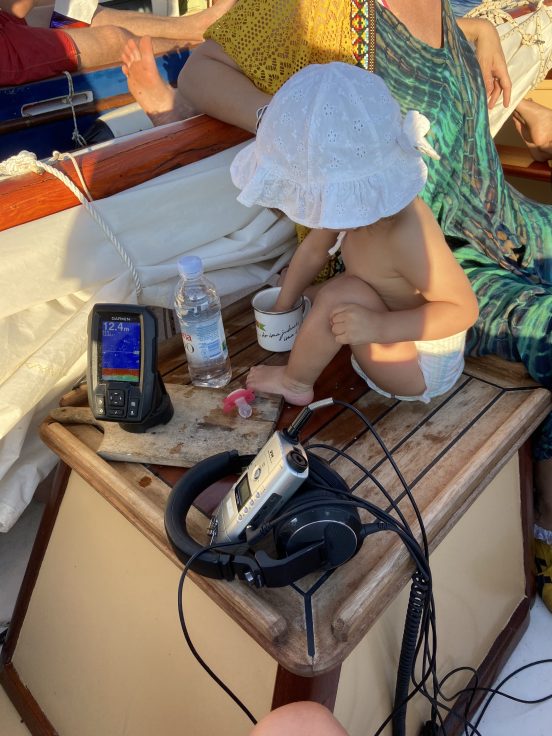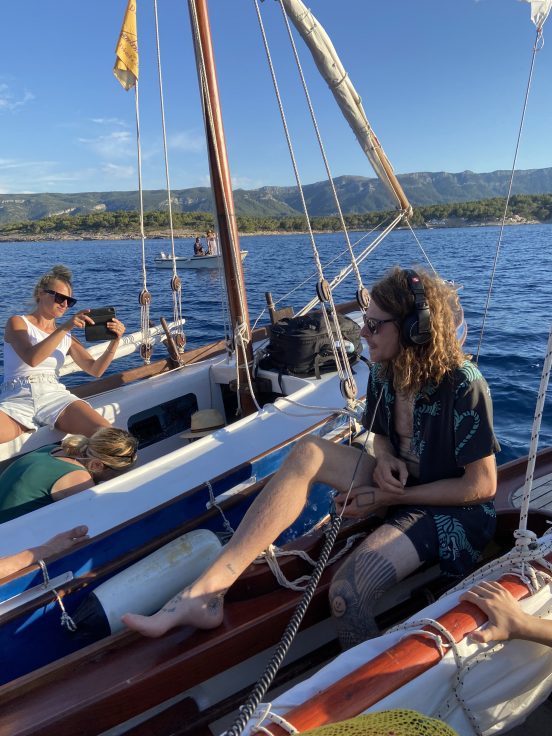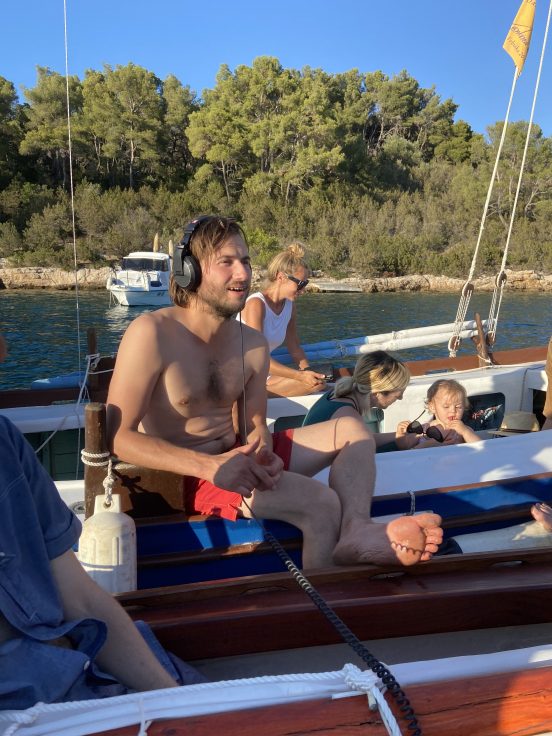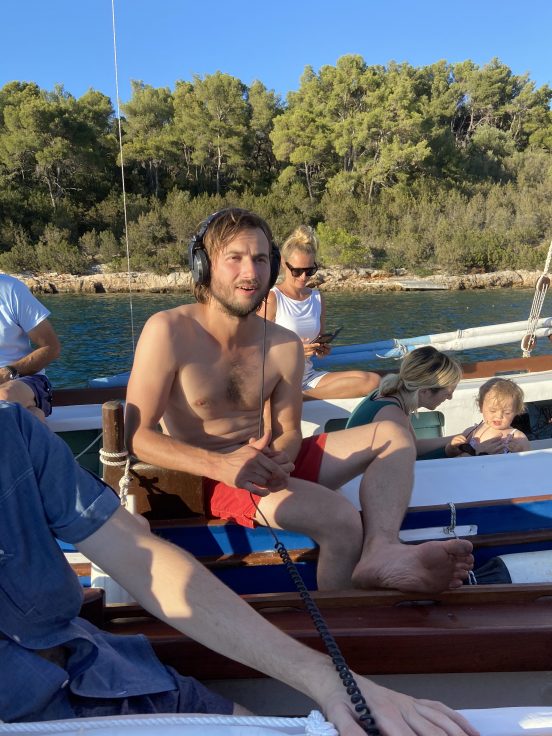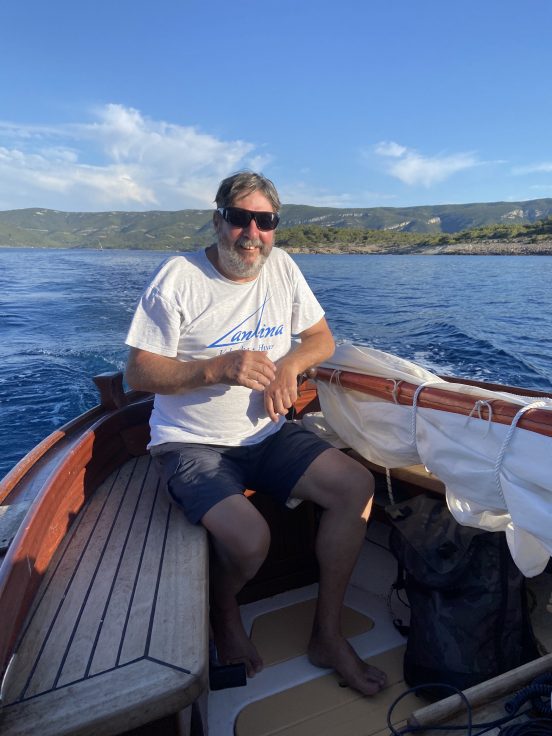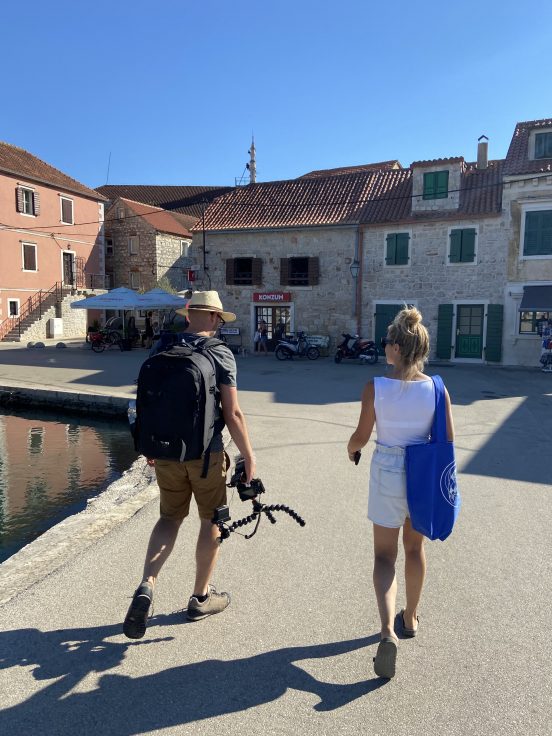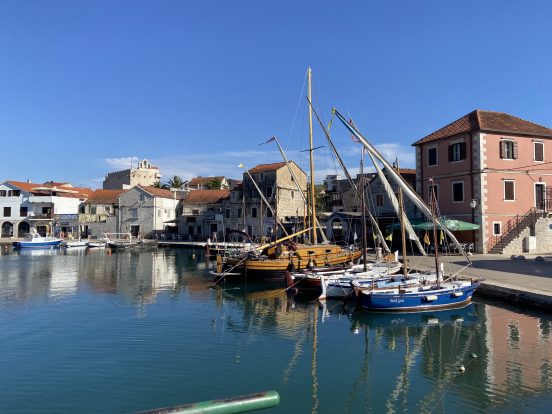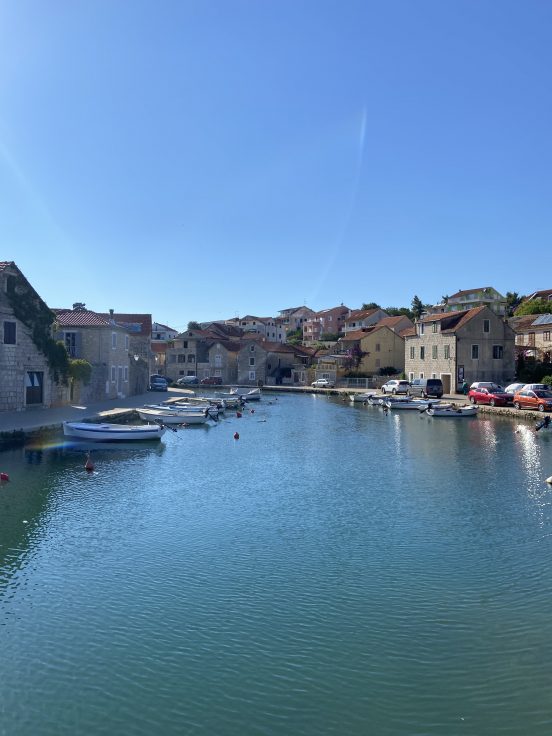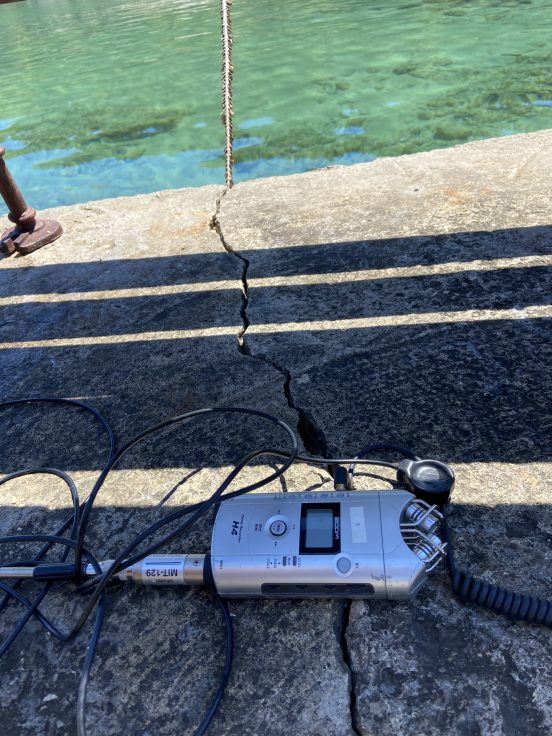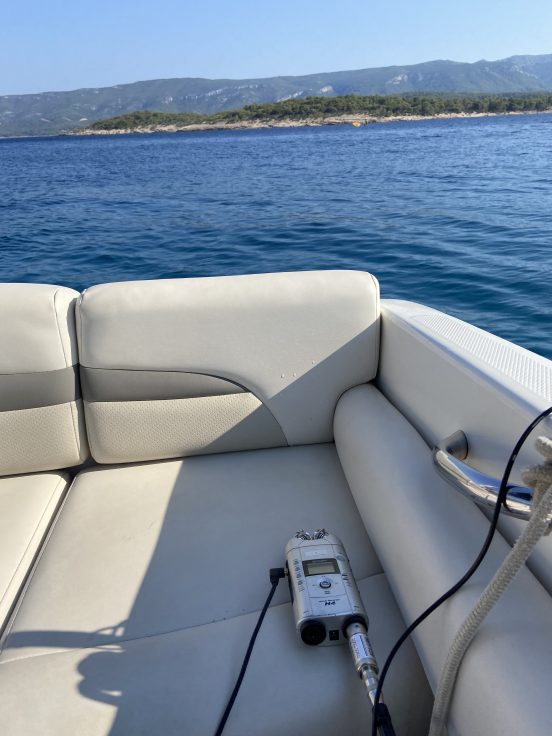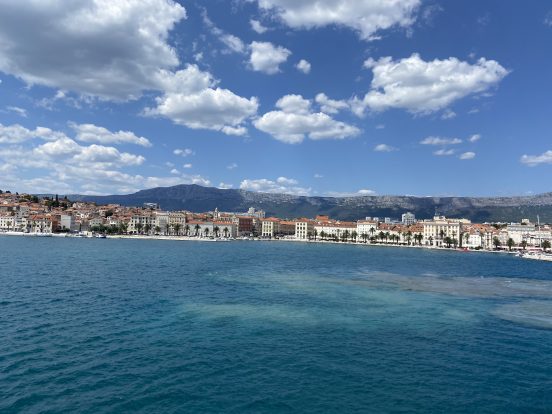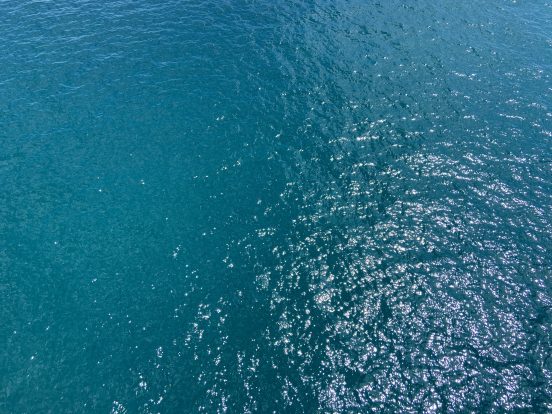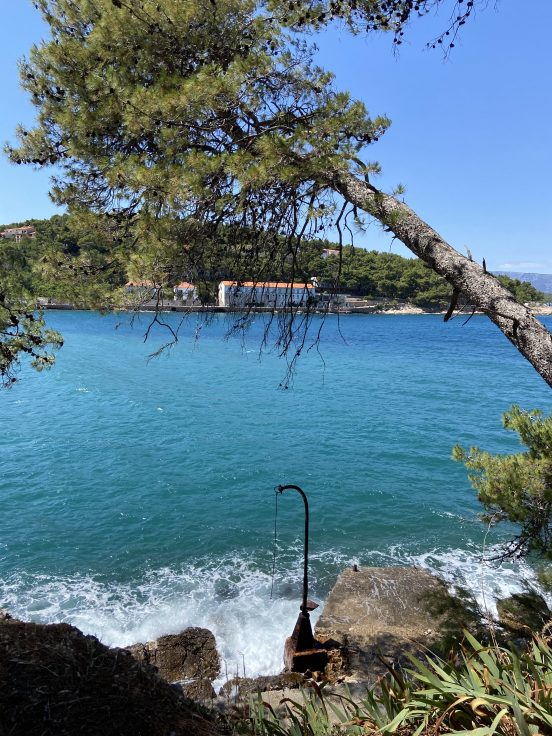The ending of Switch Off and Listen campaign
A pledge for Jelsa as the future center of contemporary art practices and ecological tourism
By: Franka Štrkalj for Kulturflux online portal
Switch Off and Listen campaign (#ugasiislušaj/#switchoffandlisten), was created as a part of the European platform MagiC Carpets, and presented to Kulturflux a few weeks ago by the Portuguese artist Francisca Rocha Gonçalves. We bring you a thorough insight into the programs presented from August 20th to 22nd as the culmination of a two-month-long project activities, as well as the impressions of the participating artists who contributed to the overall acceptance and participation of the local community, which is already looking forward to similar projects that will be hosted on the island in the future.
The workshops that took place as a part of the Switch Off and Listen campaign in the first half of August brought the entire world of underwater sounds closer to the ears of interested participants and, thus, opened a new way to connect and understand the big blue and its inhabitants in general. On the traditional sailing boats embarking from Jelsa and Vrboska on daily basis at the beginning of August, the sounds were heard, recorded, and then described in words on paper in order to collect the material for the final artistic performance and exhibition. In the performance Secret Messages From the Sea, taking place on Thursday, August 20, artists Francisca Rocha Gonçalves, Paulina Almeida, Ron van Roosmalen and Sasha Aleksandar participated, along with local participants: the dancers from KUD Jelsa, Vlatka Buj, Maja Huljić, members of the Lantina association, who got involved by selecting and reading poetry, co-creating the performance and enabling the children’s play of shadows on the sails of ships.
This once again confirmed the engagement of locals as one of the fundamental components of the MagiC Carpets platform. Paulina Almeida and Ron van Roosmalen worked together on the dramaturgical design of the performance, the act of “coming out of the sea” composed of written impressions by workshop participants. We were interested in what impressions the work with people from Jelsa left on them, how they experienced the collaboration with the children in the workshops and how they approached the design of their part of the performance.
“I stayed at the residences in Jelsa for several years in a row as a part of the MagiC Carpets platform, as well as through work on the zeroth edition of the Jelsa Art Biennial last year, so I can say that I already know this area rather well,” Paulina Almeida told us. “I got ideas for the performance concept by examining the place we are in, so it was natural for me to include the ships of the local association in the performance itself. This is a type of site-specific performance that I have been doing for twenty years, which is why my biggest source of inspiration is being with the population, asking questions, and building relationships. The continuous work over the years is important to me because projects that involve the community do not come overnight. I think that these few years that we have been coming here have been crucial in this specific connection with the island and the inhabitants.”
Paulina pointed out that in the final performance, in some way, they tried to return to people the messages that the sea sent them through themselves, and that it was only necessary to take time to listen, hear and experience these messages. These moments did not necessarily have to be connected in a narrative, but only to reflect the change of receiving and giving that is constantly happening between community and nature.
We also talked to Ron van Roosmalen, who told us what impression the fishermen from Vrboska left on him and what changes he noticed compared to the first days of his stay on the island.
“Through our stay with the people from the Fishermen’s Museum and the fishermen themselves, we learned a lot of different traditional techniques that we tried to incorporate into working with children. So we tried to play situations with them in which fishermen created the shadows of big fish in order to scare away the shoals of smaller fish and chase them into the net, or to imitate the usage of special tools which would confuse the fish by hitting the surface of the water. Getting to know and interact with older fishermen has clearly shown how much interpersonal communication can change some attitudes based on the fear of the unknown. I felt that they were initially reluctant to participate, but after we met, talked and learned from each other every day, they asked us, if we would come back next year and organize more workshops for excursions and listening.” Ron told us. The sounds of the underwater were experienced and interpreted by each workshop participant in a specific way, and among the different associations found in their descriptions were comparisons with loud applause in the stadium, continuous heavy rain or the sound of frying food in the pan. Such sensations were probably produced by the sound of snapping shrimp in Jelsa’s aquatorium during the workshop. In his novel The Ocean Sea, the Italian writer Alessandro Baricco points out, among other things, that the sea cannot be defined by borders, the beginning or the end, and thus cannot be described in words, no matter how hard you try to find them. Nevertheless, one of the workshop participants, describing the sound of the seabed, managed to express a very strong thought, linking it to something we could hear in the womb or inside the womb from which life comes, and we would agree that such a comparison is very conceivable, given all the power existing in the connection of the sea and people, but also of the rest of the living world in general. Those of us who did not attend the workshops were left with audio recordings of the underwater sessions through which we could try to identify them and interpret our own secret messages from the sea. In addition to the performance with the messages, an exhibition set up in the Rowing club was opened on the same day.
It presented the art products of the abovementioned children’s workshops, questioning the relationship to nature, the sea, silence and noise as well as the connection with the inner self. The curator and one of the organizers of the campaign, Marija Kamber, worked on the design of the workshops and the educational children’s program. She described her role in the project and the way of working with children in the context of connecting art and ecology.
“Through LAB 852, I have been collaborating on the MagiC Carpets project from the very beginning and my role has been fluid over the years. So last year, I was a curator, and this year, I created an educational program for children, which is one of the key parts of the project because their works were also part of the final artistic performances. When it comes to such projects, in cooperation with children, one should take a gentle stance, but at the same time, keep in mind that they perceive all the things the adults perceive, in their own way. At the workshops, artists Valerija Djanješić, Jelena Kovačev, Domagoj Hmura and I presented to the children a program that included techniques that they might not have the opportunity to encounter elsewhere. These included an introduction to the Japanese technique of painting on the surface of the water, called suminagashi, where the paint from the surface of the water is transferred to the paper that we later bound in notebooks. On this, we continued with the workshop on listening to sound and creating spatial sound maps, where Francisca also participated through connecting listening to sounds above and below the sea surface. Our goal was to raise awareness of the problem of sound pollution even among the youngest part of the community. I believe that the children are reached most deeply through practical work and ideas implemented at the core of the workshop itself. I would definitely like to point out the great help of Jerko Božiković, a coach at the Rowing club in Jelsa, with whom we collaborated throughout the realization of the program, and who also helped us connect the rowing techniques with the story of our workshop because it actually fits very well into the whole idea of sound ecology of the sea.”, Marija concludes.
The program of the second day, on Friday, August 21, consisted of ambient sound and light installations by Francisca Rocha Gonçalves, the initiator of the campaign, whose goal was to create an immersive experience on the Jelsa’s circular square of St. John that symbolically gathers all residents and guests. The public lighting leading to and on the square was replaced by blue light and the square itself was filled with laser projections, complemented by light-filled balls, discarded elements of the former public lighting. The immersive installation called Buka consisted of partially processed recordings from the workshops, with special emphasis placed on those moments in which anthropomorphic sounds were strongly intertwined with the meditative sonic landscape of the seabed.
Judging by the reactions of those gathered and all those who in any way participated in the programs and workshops, it is easy to conclude that Jelsa, although a small island town, is very ready for a variety of contemporary art practices and looks forward to new projects and performances. Such a positive atmosphere around new ideas on islands and smaller coastal towns is often achieved only after many years of successful organization and collaboration, and it is not uncommon for the local community to remain completely distanced from the project, reluctantly refusing to collaborate with artists they do not know well, and perceive not very differently from most tourists who come with the aim of exploiting something that is of vital importance and value to the residents. The people of Jelsa showed that they had obviously abandoned such an attitude a long time ago, and Karmen Krasić Kožul, MagiC Carpets’ curator from LAB 852 told us about this cooperation.
“As far as cooperation with the islanders is concerned, maybe the crucial fact was that I am an islander myself. Although I have lived in Zagreb for most of my life, my primary identity has somehow remained that of the island. However, the reality is that I mostly stay on the island in the summer, which for those who stay on the island permanently, potentially puts me in the group of so-called ShouldDo-islanders. There is really nothing the islanders like less than occasional islanders who come to them to figure out how they should live, work, think. Taking into account such sensibility, this and other projects we have realized on the islands over the past nine years are based on doing, not theorizing. We have built the trust of the local population on such approach. It was a long road in which the gap between Us and Them had to be bridged, that is, the vision brought by contemporary artists and the reality in which it had to be implemented. For example, in the Networked Encounters project in 2015, we showed how the abandoned winery can function as a museum and a gallery, and former workers and contemporary artists jointly participated in the creation and presentation of content. In the Second Home project in 2018, we showed how to revitalize the abandoned village through a program of art residencies, without the need for modernization and gentrification that come with the dominant forms of tourism. It is true that in the absence of cultural policies that would support the sustainability of such projects, they remain at the level of inspiration and testing grounds for experimentation and learning. In fact, it seems to me that only this year, through the Switch Off and Listen project, the idea of true collaboration between artists and the community on the issues of public interest came to life. All previous insights and developments of methodology in the process of trial and error have contributed to this, as well as the choice of the topic: the sea and ecology. There is an unequivocal consensus on the importance of conserving marine biodiversity between the local community, contemporary artists and the conscious tourists we target with our programs. It was visible and measurable through the interest in participating in all aspects of the program, as well as the interest in developing similar programs into some form of permanent offer. For long-term impact and radical changes, the long-term nature of the project is needed, and given the situation with financing culture in Croatia, we are very pleased to learn about the self-sustaining potential that the Switch Off and Listen campaign showed during the time of COVID, filled with uncertainty and existential fears. Next year, on the tenth anniversary of our activities on the islands, we are organizing the first edition of the Jelsa Art Biennial. We organized a pilot edition in 2019 in the format of an international art residency, and the multilateral interest in creating new value through socially responsible action will certainly be the basis and the financial construction of the project next year.”
In the end, Karmen presented her vision of developing the project as a potential main artistic and tourist carrier of Jelsa’s environmental awareness in the future: “In the ideal scenario, JAB will become an international festival of social responsibility and the main reason for eco-tourists to come to Hvar. It may take another ten years to realize that vision, but the sky of Hvar supports us that even if slow, we do not walk small under stars.”
